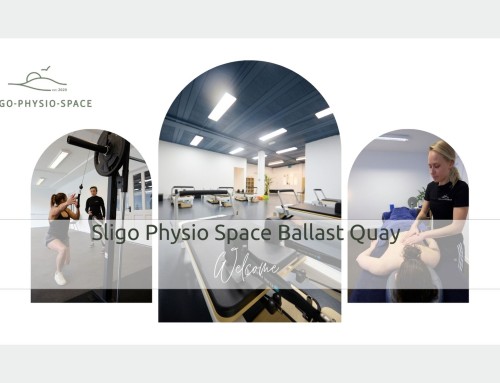Hip and Groin Physiotherapy
Evidence based Physiotherapy Diagnosis of Hip and Groin pain
Classification:
Adductor related– adductor tenderness & pain on resisted adductor testing
Illiopsoas related – pain on resisted hip flexion &/0r pain on stretching the hip flexors
Inguinal related – pain & tenderness inguinal canal region . no palpable hernia is present, aggravated with resistance of abdominals or on Valsalva/cough/sneeze
Pubic related – local tenderness of Pubic Symphysis & immediately adjacent bone, no particular test
Hip related mechanical symptoms, positive FADIR & FABER tests, reduced hip passive range of motion
Other conditions to consider
Fractures
Slipped capital femoral epiphysis
Perthes
Avascular necrosis
Arthritis – reactive or infective
Hernia
Nerve entrapment
Referred pain –lower back and SIJ
Gynaecological conditions
Tumours
Risk Factors for Groin Injury
Previous groin injury
Higher level of play
Reduced hip adduction strength
Lower levels of sport specific training
What is found on a typical Physiotherapy assessment for hip or groin pain
Pain and lower strength
Reduced range of movement
Altered trunk muscle function
Tenderness on palpation
Altered function
Imaging can be useful to show
Degenerative changes
Muscle and joint changes
Bone bruising
Tendon issues
Treatment
Physiotherapy – excellent evidence for treatment of most hip and groin related pain. Treatment generally involves tailored exercise.
longstanding adductor related groin pain
Physio- Moderate evidence for supervised active physical training
Surgery- Partial release of add longus tendon is effective for return to sport overtime
Inguinal related groin pain– laproscopic hernia repair results in lower pain & a higher return to Sport
Femoro-acetabular Impingement – surgery – high 82% return to sport
Information on Femoro-acetabular Impingement (FAI)
FAI syndrome is a motion-related clinical disorder of the hip with a triad of symptoms, clinical signs and imaging findings. It represents symptomatic premature contact between the proximal femur and the acetabulum
Symptoms, clinical signs and imaging findings must be present to diagnose FAI syndrome.
Symptoms
The primary symptom of FAI syndrome is movement-related or position-related pain in the hip or groin. Pain may also be felt in the back, buttock or thigh. In addition to pain, patients may also describe clicking, catching, locking, stiffness, restricted range of motion or giving way.
Hip impingement tests usually reproduce the patient’s typical pain; the most commonly used test, flexion adduction internal rotation (FADIR), is sensitive but not specific. There is often a limited range of hip motion, typically restricted internal rotation in flexion.
Examination
When FAI syndrome is suspected, it is important to examine gait, single leg control, muscle tenderness around the hip and hip ROM including internal rotation in flexion and the FABER distance (flexion abduction external rotation). Impingement testing should be performed, and to be positive it must reproduce the patient’s familiar pain. It is essential to examine the groin for other structures that can produce similar pain.
Diagnostic imaging
An anteroposterior radiograph of the pelvis and a lateral femoral neck view of the symptomatic hip should initially be performed to obtain an overview of the hips, identify cam or pincer morphologies, and identify other causes of hip pain. Where further assessment of hip morphology and associated cartilage and labral lesions is desired, cross-sectional imaging is appropriate.
Cam morphology refers to a flattening or convexity at the femoral head neck junction. Pincer morphology refers to either global or focal overcoverage of the femoral head by the acetabulum.
The panel emphasised that their presence, in the absence of appropriate symptoms and clinical signs, does not constitute a diagnosis of FAI syndrome. MR arthrography is usually more accurate than plain MRI to assess the labrum and articular cartilage.
Treatment
FAI syndrome can be treated by conservative care, rehabilitation or surgery.
Conservative care may involve education, watchful waiting, lifestyle and activity modification. Physiotherapy-led rehabilitation aims to improve hip stability, neuromuscular control, strength, range of motion and movement patterns.
The treatment targets for rehabilitation are wide-ranging and include improving sagittal and frontal plane hip range of motion, hip muscle strengthening and lumbopelvic dissociation. Surgery, either open or arthroscopic, aims to improve the hip morphology and repair damaged tissue. The good management of the variety of patients with FAI syndrome requires the availability of all of these approaches.
In patients who are treated for FAI syndrome, symptoms frequently improve, and they return to full activity, including sports. Without treatment, symptoms of FAI syndrome will probably worsen over time. The long-term outlook for patients with FAI syndrome is unknown. However, it is likely that cam morphology is associated with hip osteoarthritis. It is currently unknown whether treatment for FAI syndrome prevents hip osteoarthritis.
Physiotherapy-led rehabilitation seems to be associated with an improvement in symptoms for at least 2 years.
However, the studies supporting this are only a few observational studies with small sample sizes and important methodological weaknesses.
Reports of the results of surgery are more numerous and describe significant improvement in symptoms up to 5 years but they suffer similar issues of poor design and therefore high risk of bias. Longer-term results have been reported for open surgery, including improved symptoms persisting in most patients for at least 10 years.
All prospective cohort studies available demonstrate an association between cam morphology and osteoarthritis of the hip.
These studies have not found a similar association between pincer morphology and osteoarthritis. We are unable to say whether FAI syndrome is associated with a higher risk of osteoarthritis than isolated cam morphology, but it is thought likely. There is no evidence that treatment for FAI syndrome alters the risk of subsequent osteoarthritis.
Preventative physiotherapy-led rehabilitation and conditioning strategies may be appropriate in professional athletes where the prevalence of cam morphology is high, such as professional football teams.
If you have any concerns about your hip or groin pain make sure and Book an appointment with Sligo Physio Space, our Physiotherapists excel in the diagnosis and treatment of hip and groin related pain.
Check out the YouTube video for some yoga for your hip.






